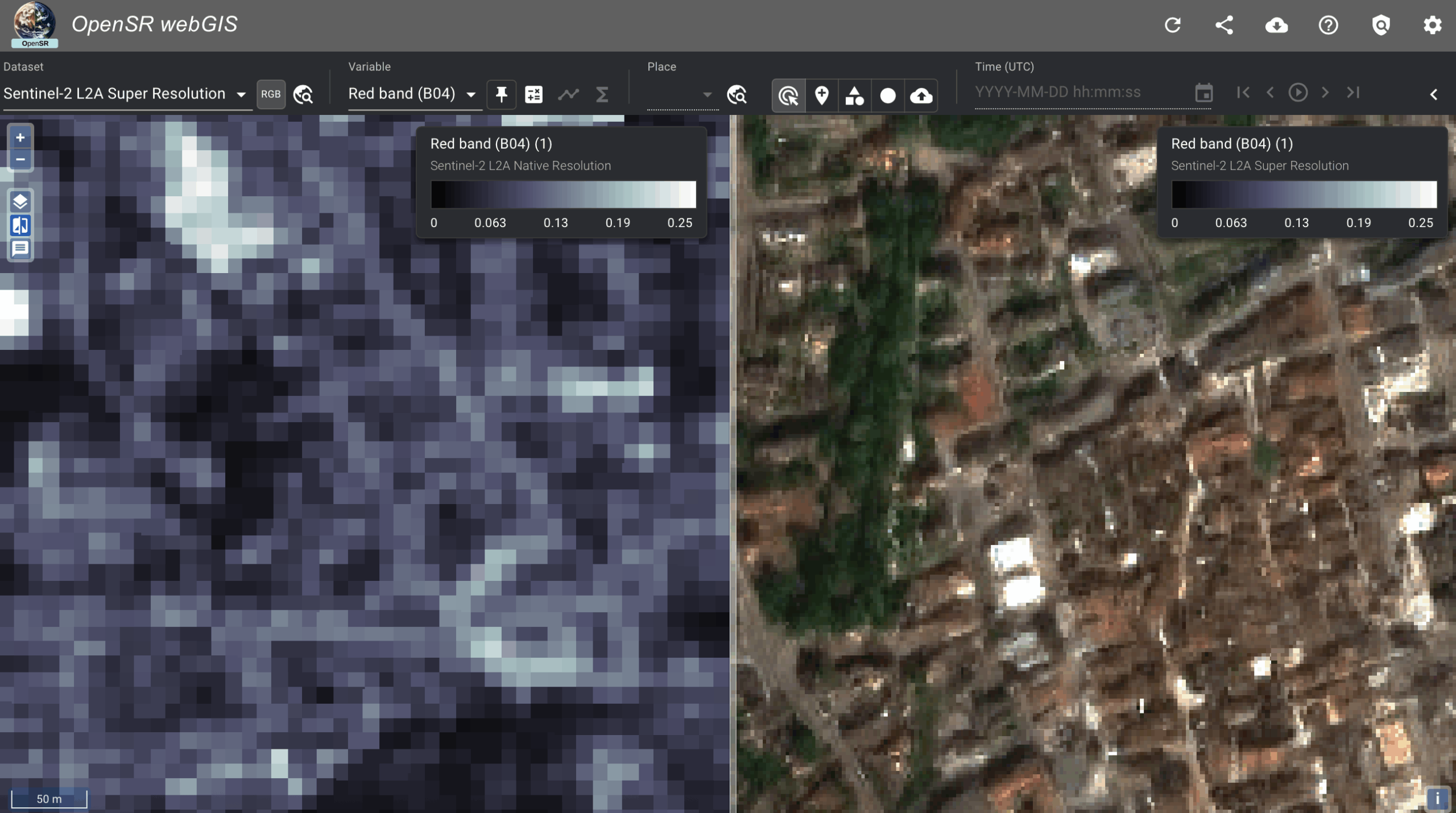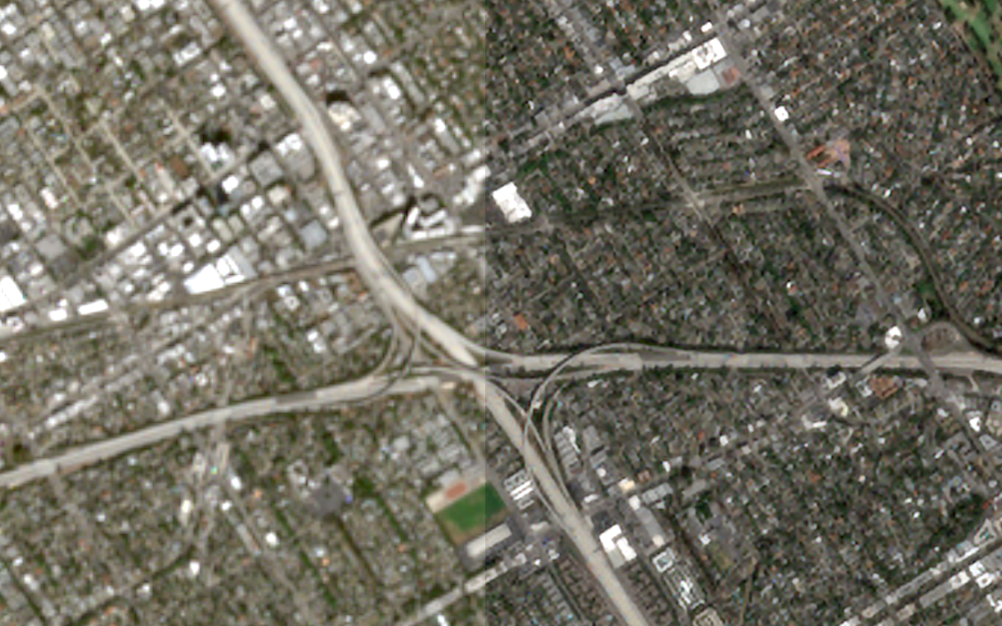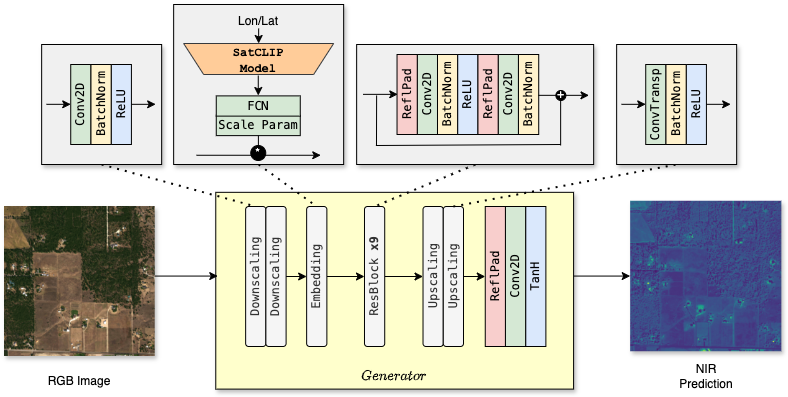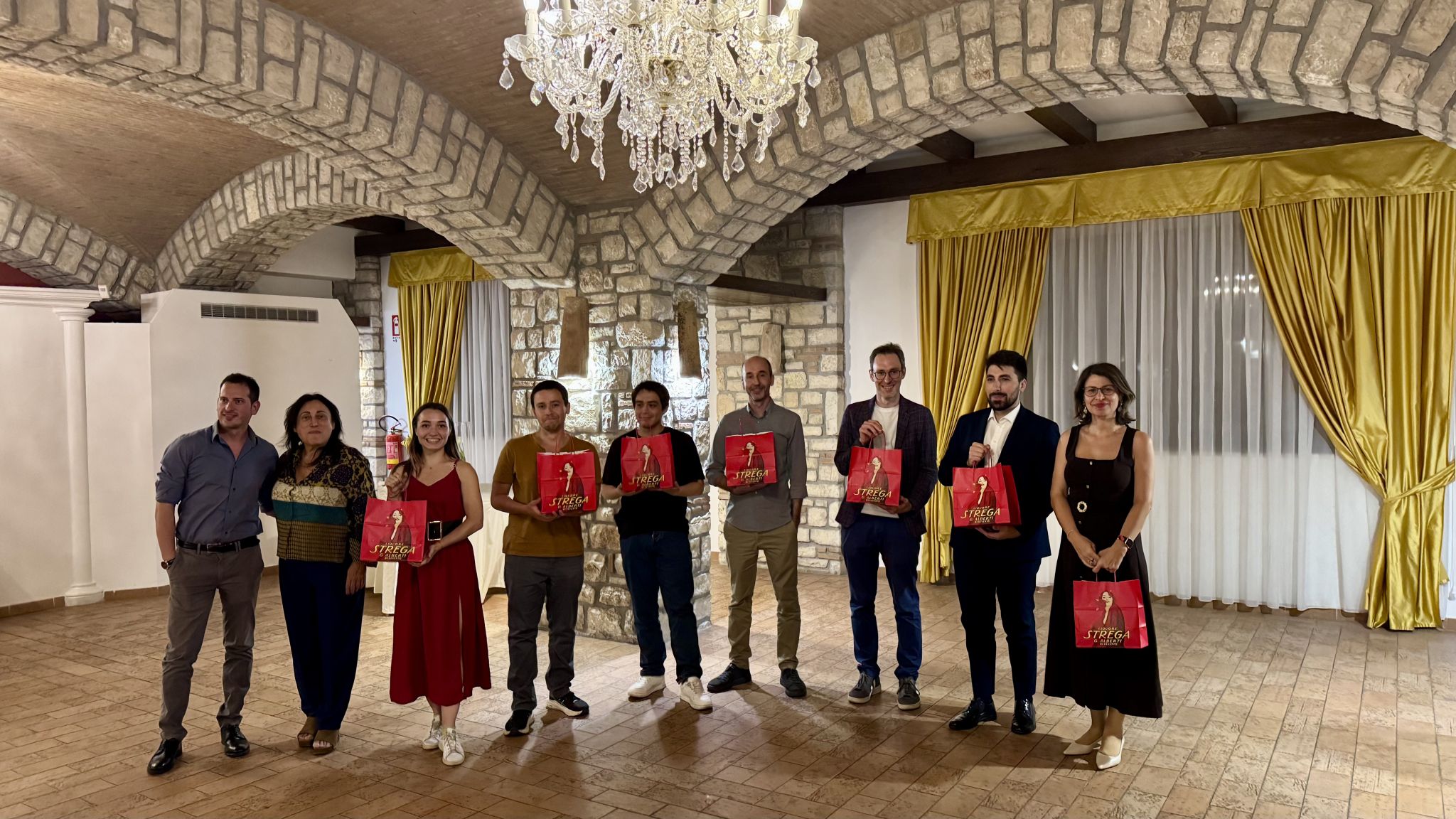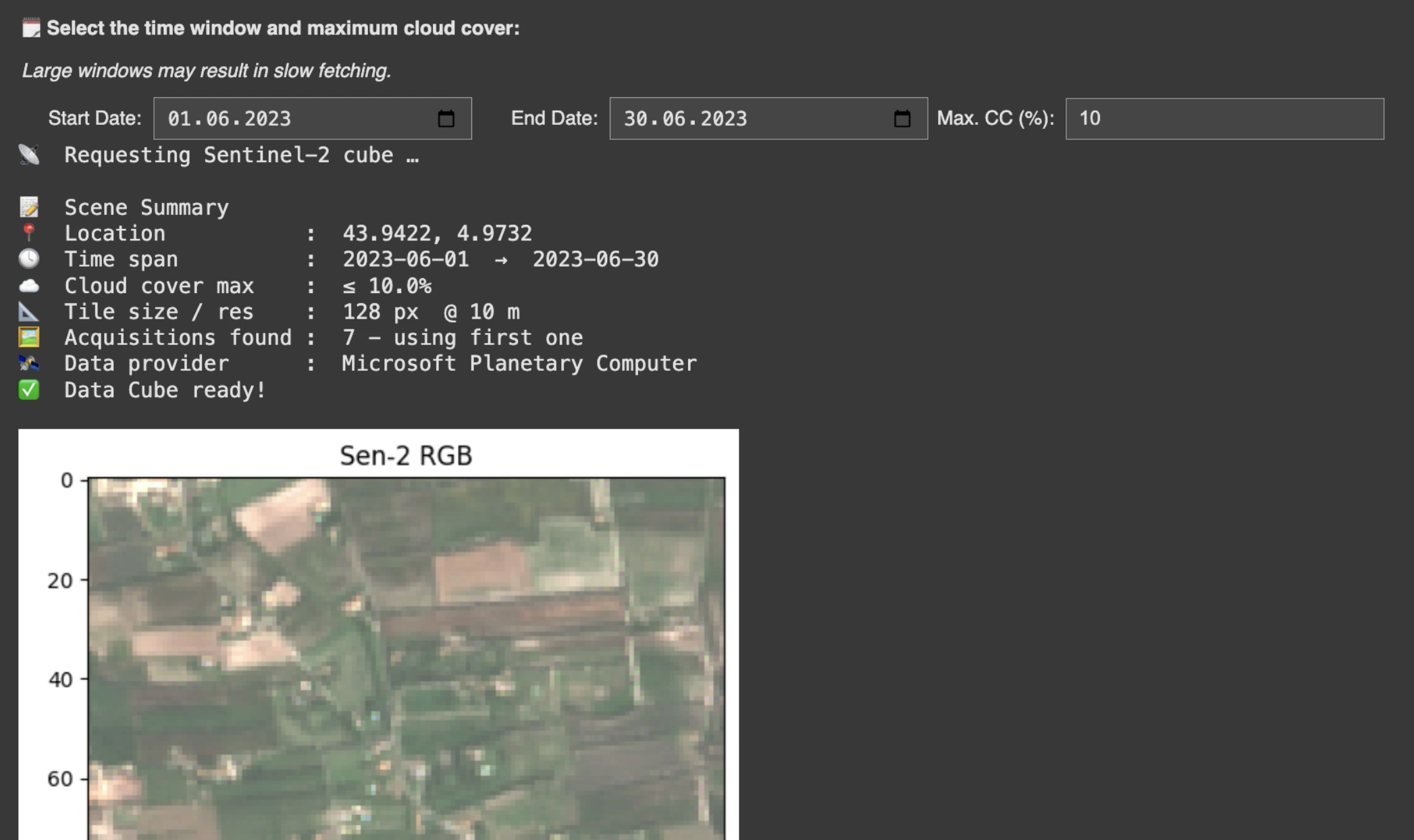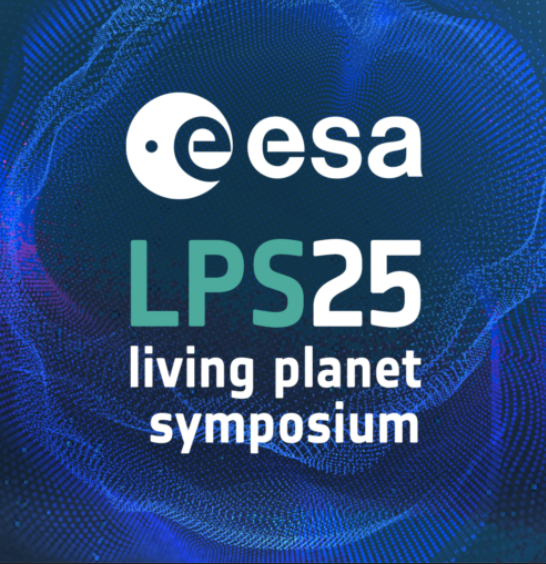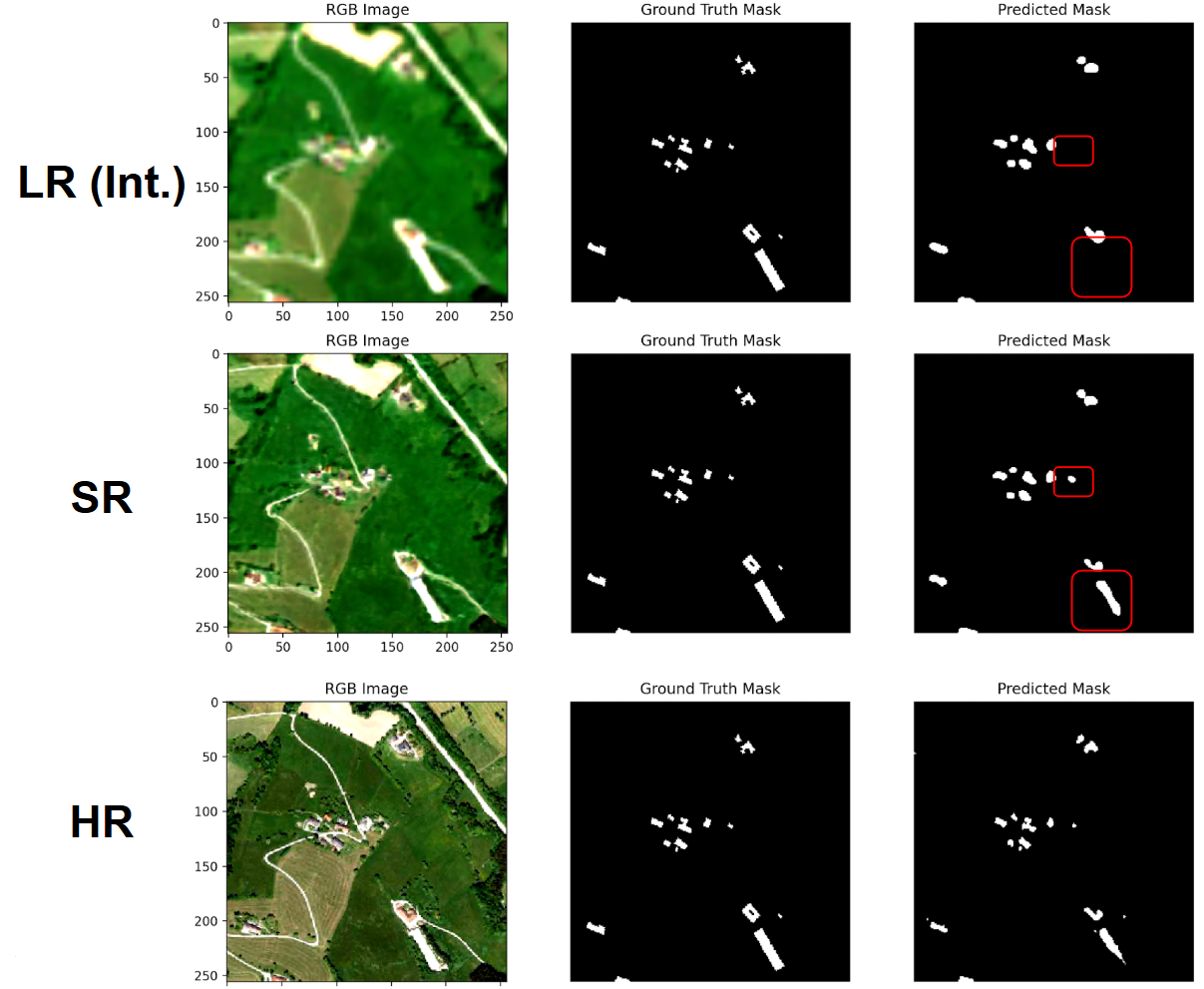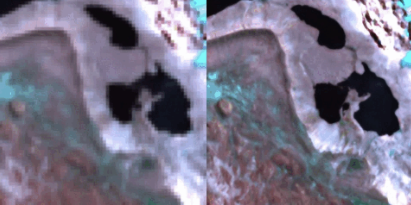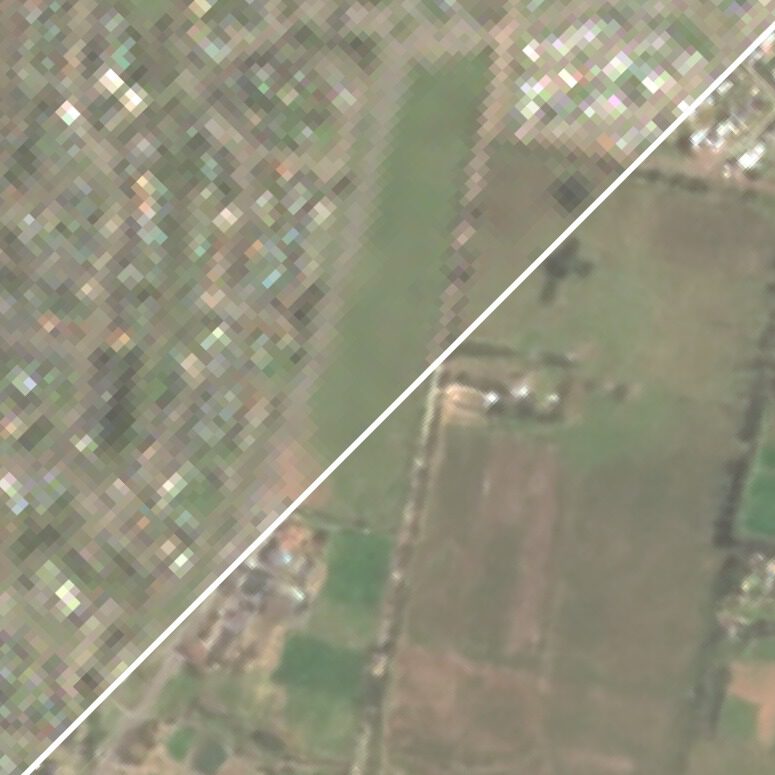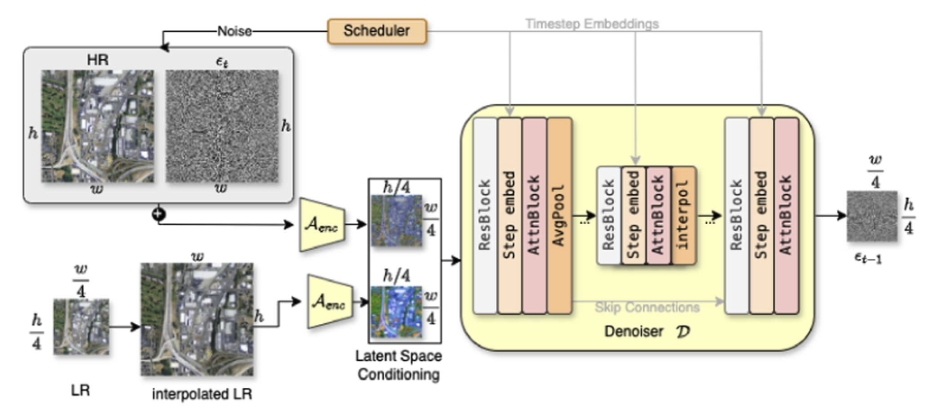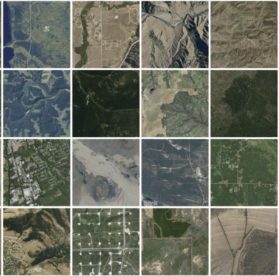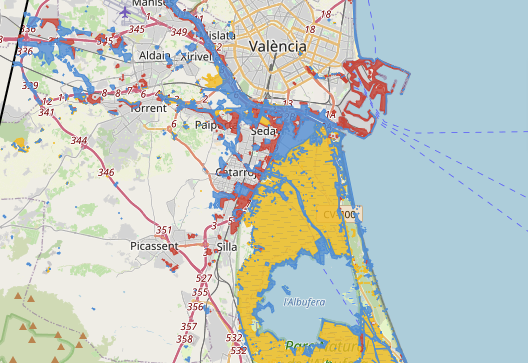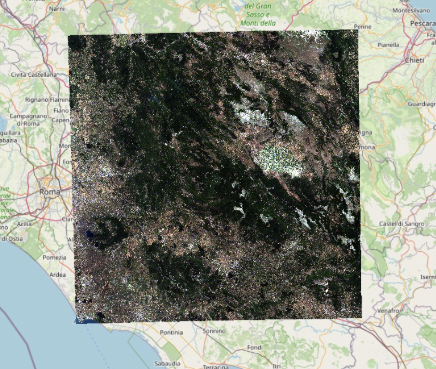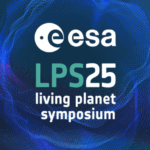
OpenSR at ESA Living Planet Symposium 2025 – Vienna
The OpenSR team was thrilled to attend ESA’s largest conference, the Living Planet Symposium 2025, in Vienna. We showcased our latest work on super-resolution for Sentinel-2 imagery, new data standards, and enhanced SR workflows. Here’s a quick recap of our contributions:
🔍 Trustworthy Super-Resolution of Sentinel-2 Products Using Latent Diffusion
Simon Donike (presenter), Cesar Aybar, Enrique Portalés-Julià, Samuel Hollendonner, Luis Gómez-Chova, Freddie Kalaitzis
We presented our LDSR-S2, a 4× super-resolution model that enhances RGB-NIR Sentinel-2 bands to 2.5m using latent diffusion. With pixel-wise uncertainty maps and strong results in downstream tasks like building segmentation and flood mapping, our approach helps unlock S2 data for high-impact applications—especially where VHR data is inaccessible.
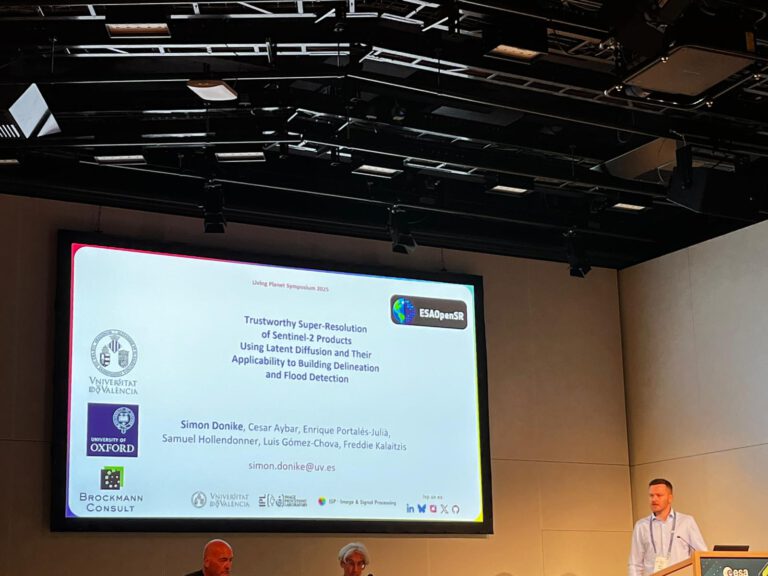
📦 TACO: Transparent Access to Cloud-Optimized Spatio-Temporal Datasets
Cesar Aybar (presenter), Luis Gómez-Chova, Julio Contreras, et al.
Cesar introduced TACO, a new data format designed for machine learning in Earth sciences. TACO provides FAIR-compliant, cloud-optimized access to spatio-temporal datasets, and is now core to the OpenSR pipeline. It supports lazy loading, parallel reads, and direct integration with ML frameworks.
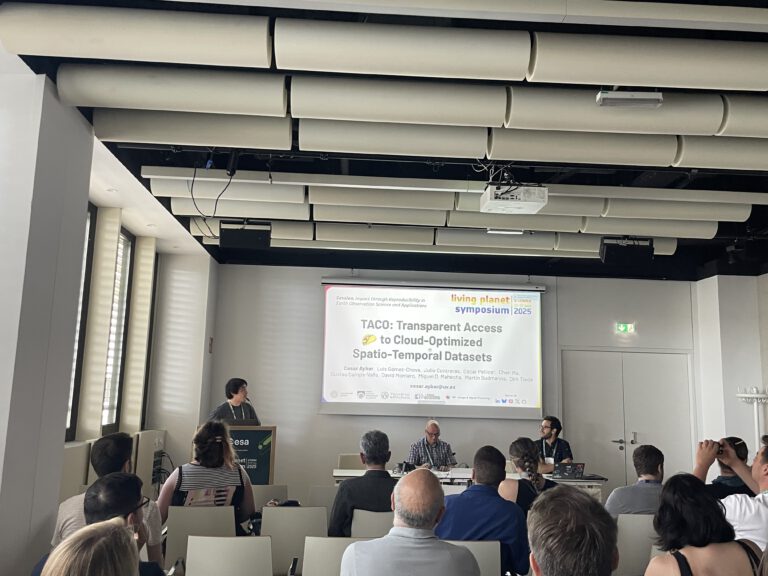
🌍 Super-Resolution of All Sentinel-2 Bands to 10m
Julio Cesar Contreras Huerta (poster presenter), Cesar Aybar, Luis Gómez-Chova, Simon Donike, Freddie Kalaitzis
Julio presented our SEN2SR workflow to upscale all Sentinel-2 bands to 10m. With a global dataset of 100k samples and a new CNN using parameter-free attention and correlation embeddings, SEN2SR delivers sharper and more consistent spectral outputs across all bands.
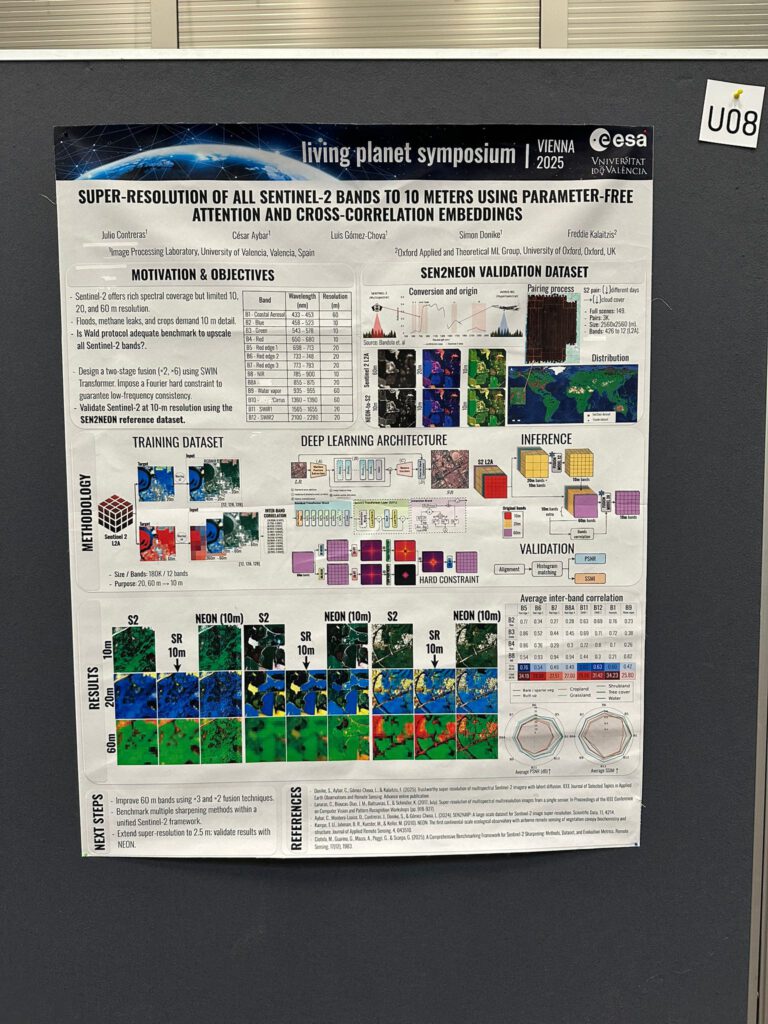
Thanks to everyone who visited our sessions. All code, models, and datasets are open and reproducible – stay tuned for more!

